Another reason to stop using the term "embodied carbon"- it's misleading and confusing.
I say that carbon is not embodied, it's in the air, but It turns out that sometimes it is embodied in the material.
I have never liked the term “embodied carbon” for the simple reason that it is not embodied, it is in the atmosphere. That’s why I use the term “upfront carbon” to represent the carbon emitted in the making of stuff. (Read the exerpt from my book, The Story of Upfront Carbon, following the post, decribing where the term came from)
But as Paul Astle, Decarbonisation Lead at Ramboll Buildings, notes in a Linkedin post, the term “embodied carbon” is even sillier than I have suggested, because sometimes it actually is embodied in the material, such as in wood. Paul writes:
“Embodied carbon is a misleading term. It has created significant confusion across the industry, particularly as it becomes more widely used by professionals and the public. One of the most problematic areas of misunderstanding is the relationship between embodied carbon and the biogenic carbon in materials like timber - or as some might say, the carbon "embodied" in the timber.”
Paul then gets into the debate about how much carbon is embodied or stored in the timber.
“Our position: biogenic carbon storage should be a totally separate story. Timber offers clear carbon benefits, primarily through displacing more carbon-intensive materials. It also provides a means of long-term storage for biogenic carbon. However, this storage should not be conflated with the fossil fuel emissions associated with a building’s construction and lifecycle.”
This is a brave statement in an era where some architects are using huge chunks of mass timber, counting all of the carbon stored in the wood and declaring their buildings “carbon positive.” Others are adding up the displaced carbon-intensive materials and calling them “avoided emissions.”
It also avoids what has been called a “perverse incentive” to use more wood. As engineer Will Hawkins wrote in "Timber and Carbon Sequestration," "accounting for sequestered carbon is often a source of debate, confusion, and inconsistency. When sequestration is reported within Module A, [in the upfront carbon] or alongside it as a negative emission, it can create the counterintuitive impression that using timber excessively can have environmental benefits."
As I note in my book, “I have been talking about wood construction for well over a decade and have not yet got a definitive answer about how much carbon is stored in mass timber structures and how much is lost along the way.” Then there is the question of how much CO2 is returned to the atmosphere at the end of life.
In the end, I believe Paul Astle and Ramboll are taking the right approach, as I understand it: no credit for carbon storage. Mass timber is still better than the alternatives; as timber expert Dave Atkins told me a few years ago: “If you don’t grow it, you mine it.”
See more from Ramboll in their paper Biogenic carbon in timber buildings – how should it be considered?
Here’s an exerpt from my book “The story of Upfront Carbon” discussing where the term came from. I start the book with a look at iPhones, so Apple comes up in the discussion.
The amount of energy that goes into making a product used to be called “embodied energy,” defined as “the sum of all the energy required to produce any goods or services, considered as if that energy was incorporated or 'embodied' in the product itself.” However, we are in a climate crisis caused by carbon dioxide, methane, and other greenhouse gas emissions, so instead of measuring embodied energy, we started measuring what became known as “embodied carbon.” But the dictionary definition of “embodied” is “include or contain (something) as a constituent part.” The carbon is most definitely not a constituent part; it is in the atmosphere.
In a world where we must reduce and eventually eliminate carbon dioxide emissions, this is important. Before you pick up your phone at the Apple Store, those upfront carbon emissions have already contributed to climate change. They could be considered “now” emissions, compared to “later” emissions, but they are certainly not embodied emissions.
I thought embodied carbon was a terrible name. In a Twitter discussion with New Zealand architect Elrond Burrell, we tried to come up with a better one. Elrond suggested “burped” or “vomited” carbon to make it obvious that they were a giant cloud of carbon emitted during manufacture. Others suggested “front-loaded emissions.” Jorge Chapa of the Green Building Council of Australia tweeted, “I also wonder how much people dismissing embodied carbon is the way we talk about it. Instead of embodied carbon, perhaps we should consider renaming it as upfront emissions.” I tweeted back, “I think you nailed it!” and added a word, coming up with “Upfront Carbon Emissions.”
Jorge Chapa and the World Green Building Council were the first to officially use it in a 2019 publication titled “Bringing Embodied Carbon Upfront.” Chapa explains why he thinks it is useful:
We were trying to get funding to do some work on embodied carbon, and while explaining it to a number of funders, about 10 minutes into the conversation one of them stopped us, apologized, and asked a question, “Why do you keep saying embodied carbon is a problem? Isn’t embodied carbon good? It’s in the product, that’s what embodied means, isn’t it?” Biggest penny drop I ever had.
Whether it’s burped, vomited, or just upfront, it is what is going into the air now; it’s what is important now.
Special offer!
I do not want to put up a paywall on this site, but it provides a meaningful portion of my income. So here’s a limited time offer: I will send a signed copy of the print edition of “Living the 1.5 Lifestyle” to anyone in the USA or Canada who signs up for a one-year subscription (C$50, cheap at about US$35 )
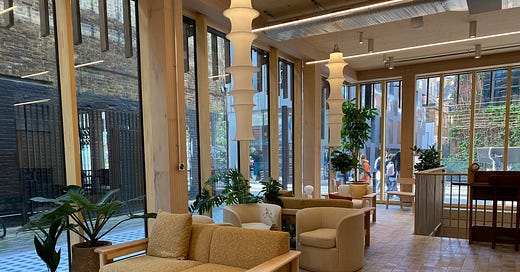



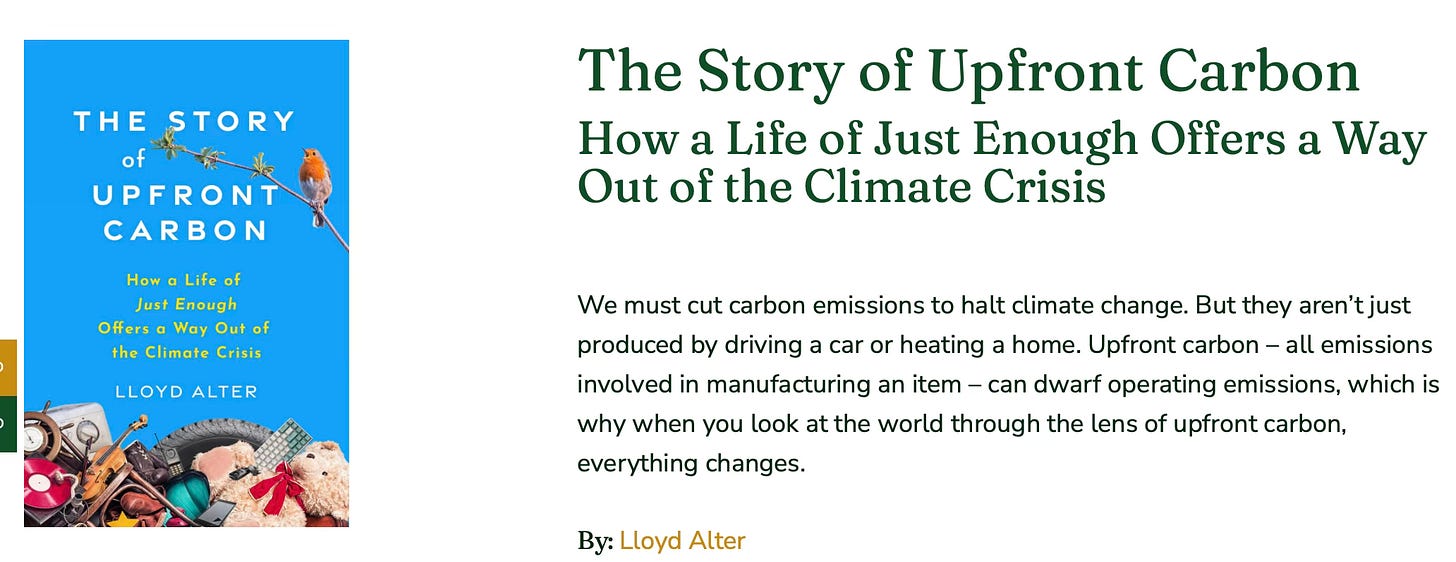
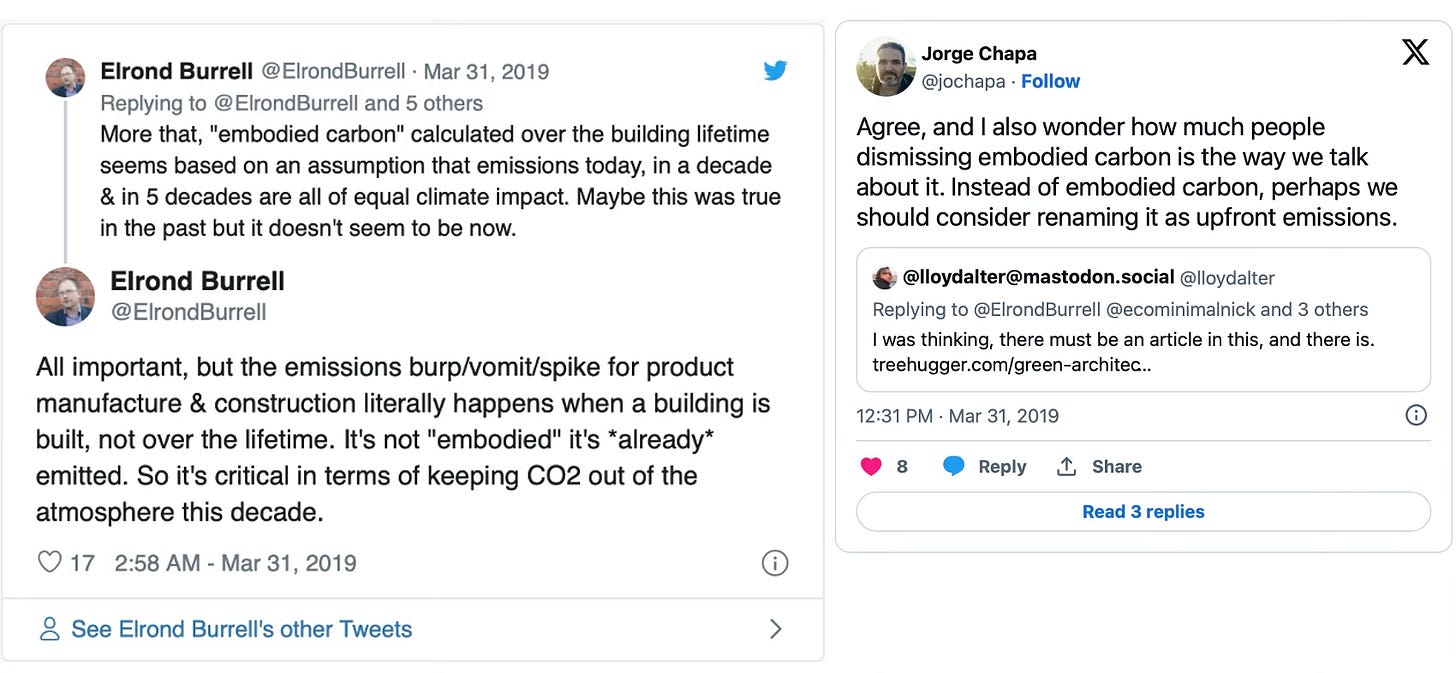
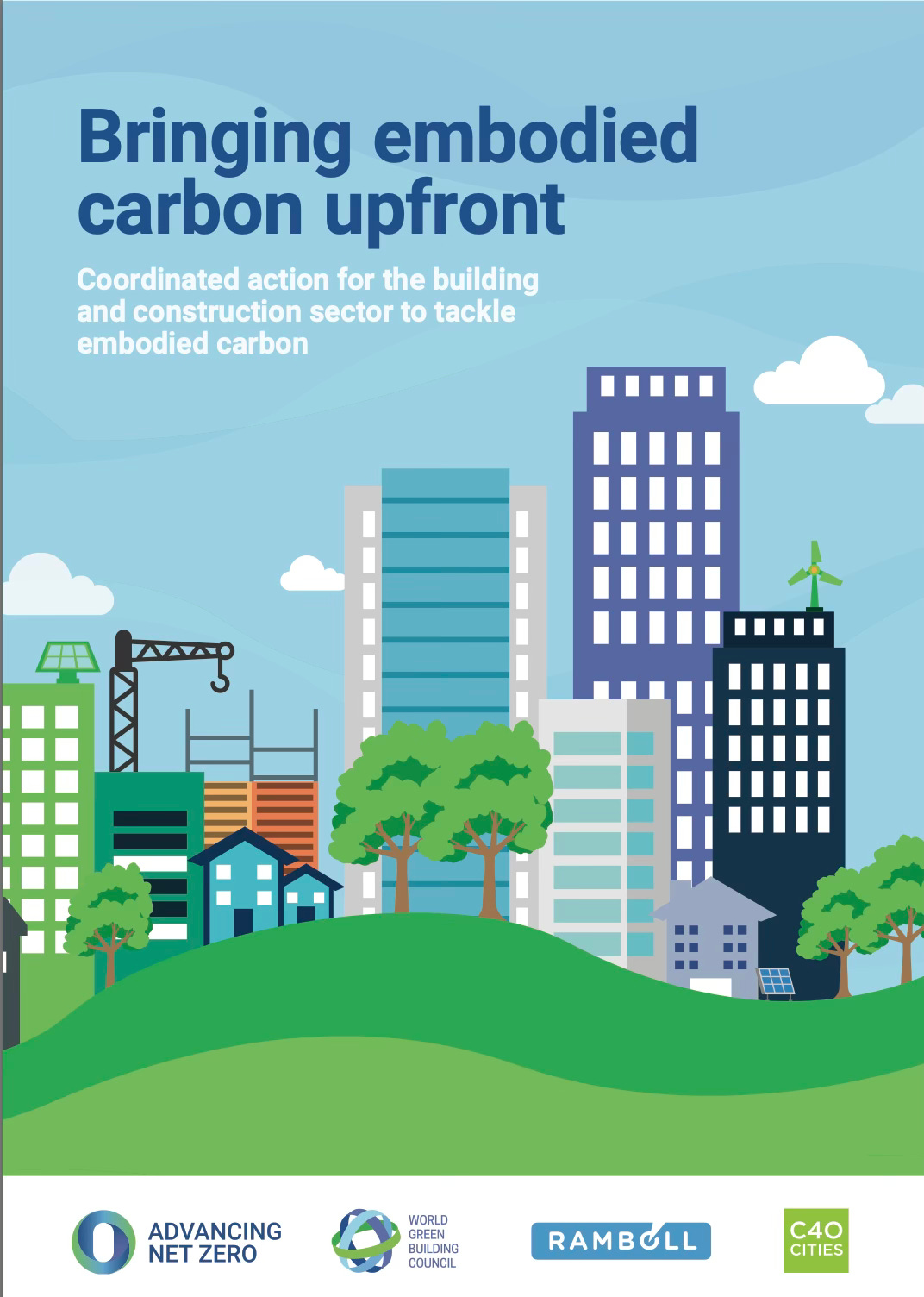
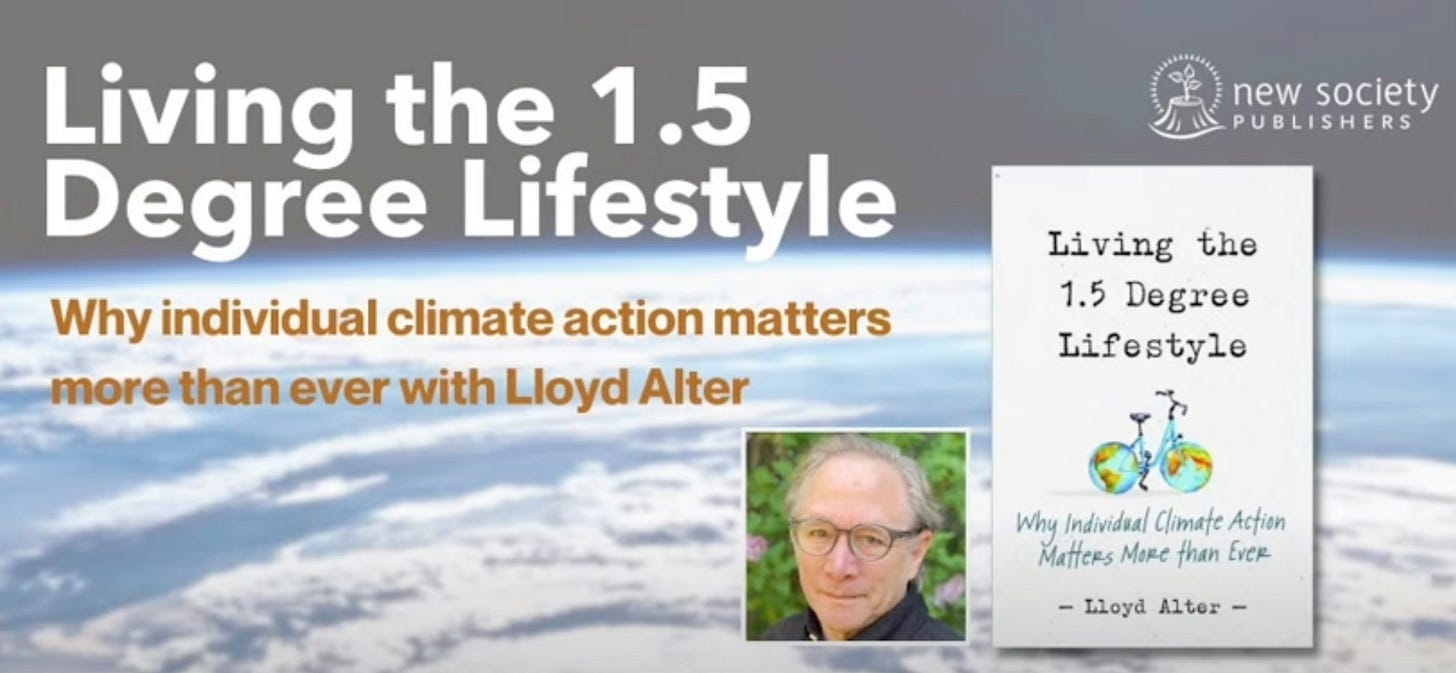
I've been objecting to this for a while due to the misleading word embodied. I've been putting carbon in three (and a half) categories: Material production emissions, operating emissions and sequestered carbon. (I can't decide between calling them material or production, so just use both for now.) Production emissions can be upfront (that's the 1/2 of the 3 1/2 categoresi) but also occur during the life and end-of-life of the building, which would means they're not 'upfront.'
So many threads to pick at here! (And most of those threads wouldn't even exist if we all lived in a world of "sufficiency"). I'm not downplaying the importance of CO2 but it sure has eclipsed a lot of other issues. I lived in the woods in Nova Scotia for 15 years and got radicalized about what we have done to our forests. If we were intensively growing wood in small areas to harvest carbon and put it in buildings maybe that would be a net benefit but we are not doing that. We are absolutely raping our forests from coast to coast to coast. Same goes for hydropower. Great, it doesn't emit operational carbon but it's hardly clean. It destroys vast tracts of land and forest. And often, the areas it destroys are important to indigenous people.
An anecdote. I once built an addition for a friend. There was a beam in it that was about six times bigger than it needed to be. My friend was proud that all the lumber was FSC but I pointed out to him that I could build a whole shed out of the wood in that one beam! I'm with you Lloyd. SUFFICIENCY!